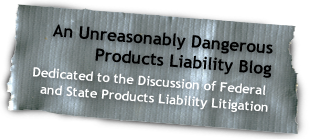Bad Television to Come: “Dead Lawyers”
John Stamos is piloting a new television legal drama. Get this: According to an August piece over at Deadline Hollywood, it’s called “Dead Lawyers.” (We’re not joking.) The premise: Recently deceased attorneys try to make amends. (Again, we’re not joking.) Think “Ghost Whisperer” meets “L.A. Law,” but with living dead lawyers, forced to face the error of their evil, evil ways and right their past wrongs in order to “pass over,” presumably into some generic unexplained legal afterlife. Apparently, this show was previously pitched and failed to generate interest among the networks (shocking.)[1] However, the previously pitched version was to air on the SyFy network (whose audience is not into lawyers – duh) and didn’t star John Stamos (who everyone loves – duh.) This time around, Sony TV is backing the show and they’ve got Stamos. Hello? Who doesn’t love Uncle Jessie? And who doesn’t love lawyers? Especially lawyers having to pay the ultimate price – forced pro bono work with an existential twist?
“Dead Lawyers” may be a new concept, but legal shows are old hat. Stamos isn’t the first in a long list of stars vying for television legal roles. Think James Spader in “Boston Legal.” Think WILLIAM SHATNER in “Boston Legal.” Think Zack Morris in the new hit (objection, speculative) show “Franklin & Bash.” “Ally McBeal.” “Law and Order.” And the list goes on.
There seem to be a whole bunch of legal dramas these days. And why not?
1. It’s really HARD to come up with a new concept these days. It’s much easier to recycle an old one. I know. I know. This time we’ll make the lawyers dead.
and
2. Think of the glamour of the legal world. You live it. You know it. Oh, so glamorous. We here at Abnormal Use, have always said that document review, when done properly, can be quite romantic.
One question: Have you ever seen a lawyer in any television legal drama actually draft anything? Anything at all? And I don’t mean a quick screen shot of them sitting at their desk before learning about some new scandal their husband has gotten wrapped up in (a la “The Good Wife.”) No way. TV lawyers don’t draft anything. So, how do they make their billable goals?
These TV lawyers stomp around court rooms, pound their fists on desks, and, my personal favorite, make arguments during witness testimony. Judges applaud, ladies swoon, and the episode ends with a witty remark by a dashing young lawyer (or fake lawyer per “Suits“) just like me. I mean, John Stamos.
Who could ask for anything more?
[1] SURVEY. What is more shocking? (a) That DL failed on it’s first attempt; (b) That they are trying again; or (c) That Stamos agreed to take part. (Stamos haters need not participate in this survey.)














